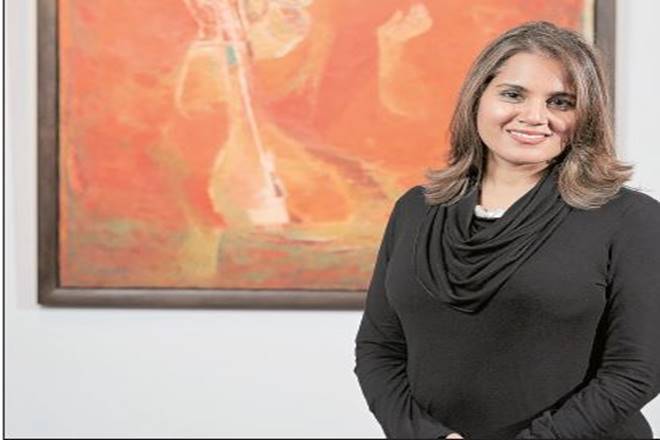Is it Indian art or Indian customers that have influenced your decision for a sale in India?
It’s definitely a combination of both. We think that the rise in wealth and India’s status in the world just means that the time is right for Indian clients, customers, collectors and consumers to participate in our global auctions. We think that by having a much stronger presence within India also allows us to engage with our Indian collectors on a day-to-day level. And, what can be better than having an auction that brings the best of international art to India, and the best of Indian art to the world?
What are your expectations from this sale?
We are hoping to use the platform of our first auction in Mumbai to broaden the market. We will have works with a range starting anywhere from Rs 2 lakh to Rs 20 crore, making it an exciting auction, where there will be something for everybody. We would also like to expand the number of artists that are featured. This country is full of artists who have not gotten their dues for whatever reasons and there’s an expansive number of artists who certainly can be on a par with the artists whose art is sold at higher prices. By doing this sale, we are hoping to showcase what we think is exciting and special about Indian art. Also, we want to expand people’s horizons with respect to collecting art, different artists, different media and appreciation for high design, as art collecting is also a bit about lifestyle. We want to engage with newer, younger collectors, but with Sotheby’s behind it.
Couldn’t you have just done with an e-auction?
We find the engagement with a live auction can’t be matched by an e-auction. We are excited about the auction in India; it will bring everybody out and this will reflect in the results.
Tell us about the artworks to be a part of this sale?
Well, it’s too early to tell because we are still gathering. The headline work leading the auction is a work by Tyeb Mehta called Durga Mahishasura. It’s probably one of his most iconic and unusual depictions of Durga, in a peaceful repose, defeating the demon Mahishasura. It has all the tropes that define one of the greatest series of Mehta’s body of work. It’s from 1993 and appearing in the market for the very first time.
Do you think you are in India for the long term?
We believe that India is a very important market, which our CEO Tad Smith has also stressed upon. Our auction in Mumbai is part of our commitment to India, and we hope the market also responds. We are seeing that Indian buyers are now bidding and buying not only from Indian sales, but also from international sales. We hope this auction will be a turning point, and believe we will plant our flag here for a long time.
What lessons have you learnt from Christie’s foray into the Indian market, and has that changed anything in the way you usually operate? What do you think you can do better than Christie’s in India?
I can’t really comment on Christie’s and their presence in India, but I can definitely say that they opened the doors to the Indian market. We hope that in time, it will strengthen.
What position does India have in the Asian continent as a market for art?
Unusually, for a country the size of India, its art market is still developing. If you compare India with other countries in Asia, specifically China and Indonesia, I believe that art of those markets is certainly higher in terms of an overall turnover. But we have high hopes that the Indian market is unique in its own way, because it’s just not India itself, but the whole global India diaspora that drives this market, which sets it apart from, say, China or other Asian countries. There is a modern, inherent stability in the market, which is actually a strength.
Edited excerpts







